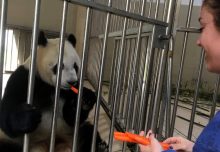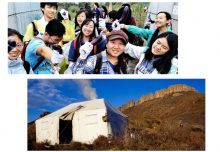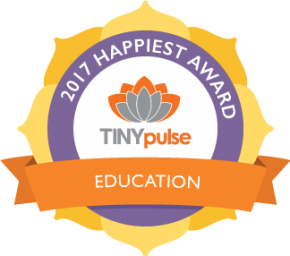Armed with just their sense of adventure, a pair of hiking boots, and their geography background (not to mention a little bit of help from The Hutong’s Education leaders: Jake and Joe), the students of Harrow Beijing’s Geography Class saw their “Watery World” geography curriculum brought to life in the foothills of Anhui’s Jiu Hua Shan.
After a restful overnight train ride from Beijing to Hefei, our young geographers teamed up with volunteers from Green Anhui, an environmental NGO dedicated to improving water pollution in Hefei’s Chaohu Lake watershed. Students learned proper techniques for measuring a body of water’s pH, turbidity, total phosphorus, and other important indicators of aquatic health. They chatted with locals about how the city’s waterways have changed in recent years, and were ultimately able to make a contribution to the World Water Project – a data collection project aimed at cataloguing water quality all over the world.
Ready to share their findings, the Harrow travelers teamed up with students from a local Hefei elementary school to teach them some environmentally focused English through creative projects and sports activities. The warm welcome the group received rivaled diplomatic receptions seen anywhere, and students from both schools were buzzing as Harrow boarded the bus for their next stop – two days spent at a beautiful monastery on Jiu Hua Shan.
Harrow rose early the next day to a scene vastly different from the grey skies of Beijing – clear skies and the bamboo-covered foothills of Jiu Hua Shan. Students got to know the mountain intimately that day, as they climbed – slowly but surely – to the monastery at the tippity top. While the hike up was serene and free of other travelers, the top of the mountain gave students the opportunity to practice a bit of anthropology by interviewing travelers from the multitudes of tourists who had come from all over to visit one of China’s four most famous Buddhist mountains. Upon return to the home base monastery in the evening, our youthful surveyors reflected deeply upon the implications and impacts of tourism.
The following morning gave our hikers the chance to stretch their sore muscles with a bit of yoga from one of the monastery’s masters, as well as an introduction to the history of the Buddhist institution – prominent in Buddhist circles as far back as the Song Dynasty (960 – 1279). Putting on their geography caps again, students trekked around the monastery to learn how the monks use “appropriate technology” to live in conjunction with the natural forces of the mountain.
Rainy weather didn’t stop students from picking an impressive amount of tea in the afternoon, and competing for top prize in The Hutong’s own “Tea Jeopardy.” Evening saw饺子 to be 包’ed, and a feast to be feasted, followed shortly by an introduction to meditation. Our budding Buddhists had a difficult time saying which was harder: the daylong hike up a mountain, or sitting still for ten minutes.
The Hutong runs programs all over China, customized for individual curriculums and educational standards. Curious to see what we can do for you? Shoot us an email at info[at]thehutong[dot]com















